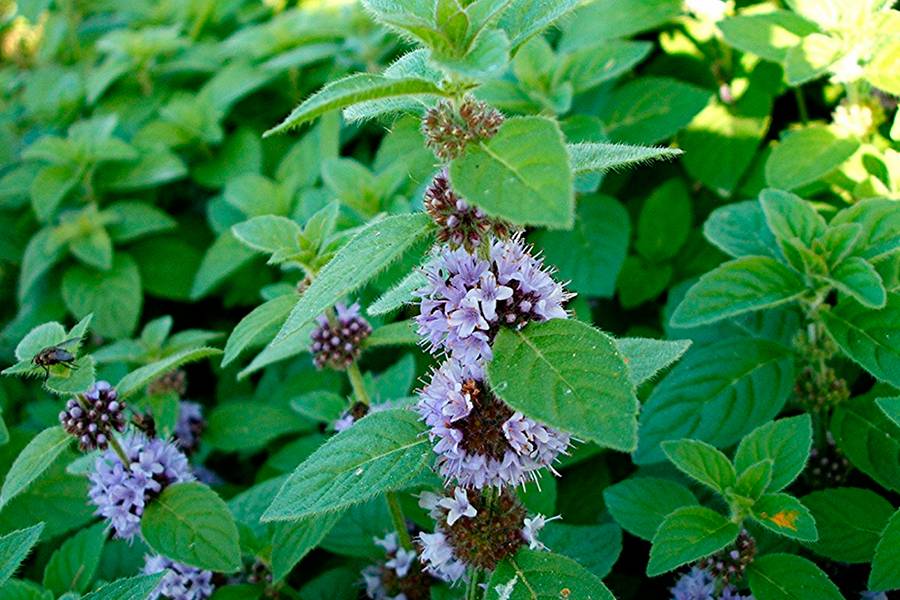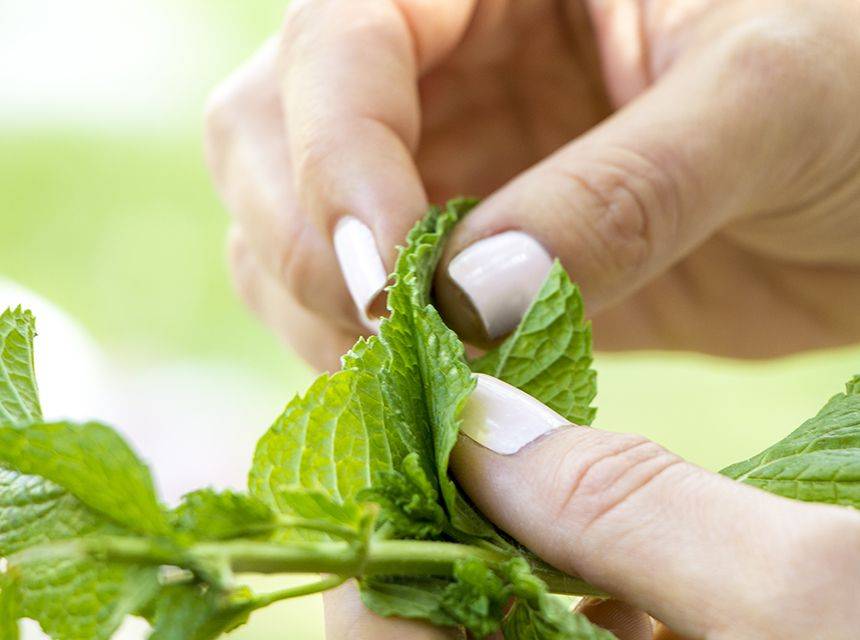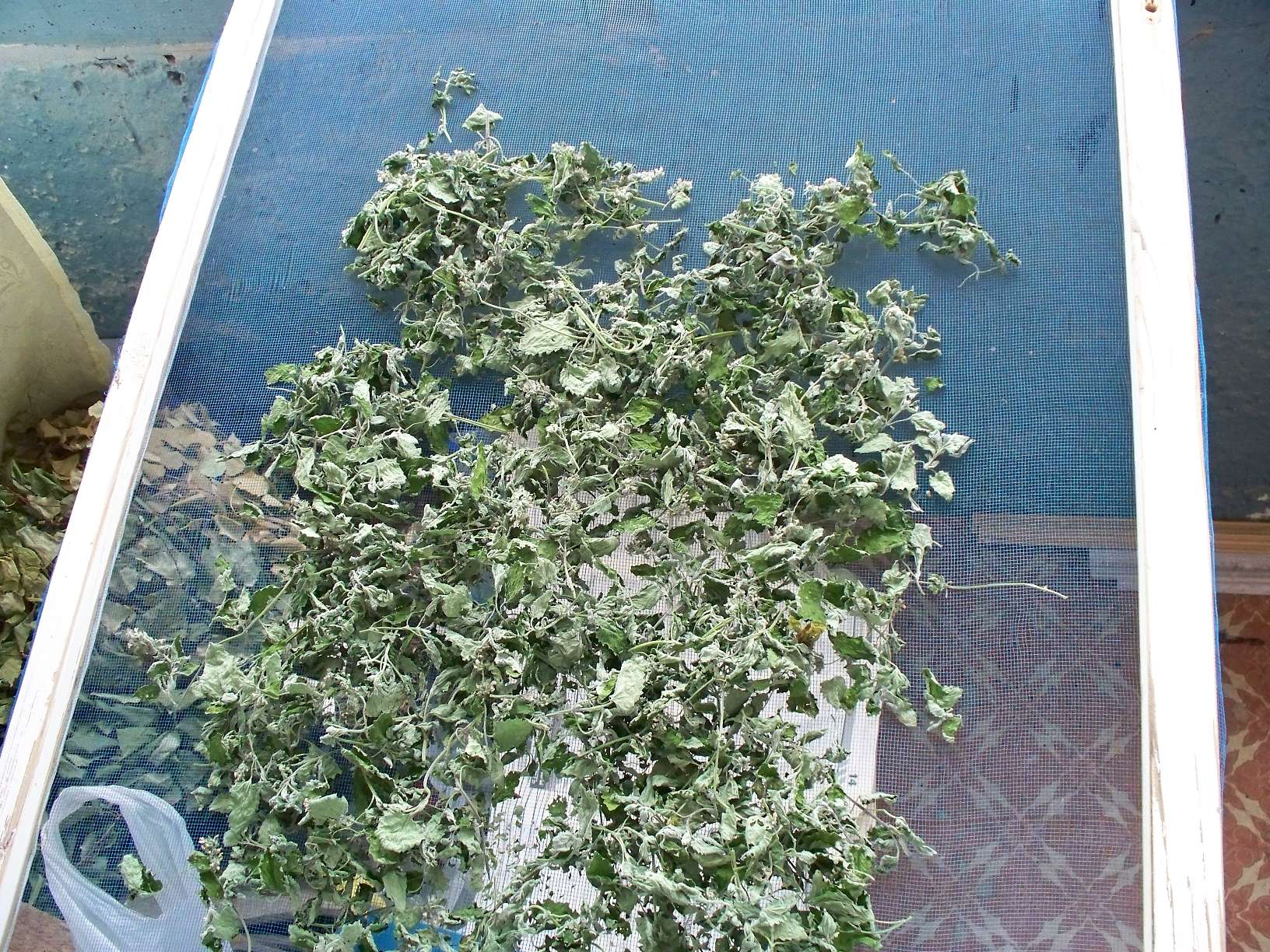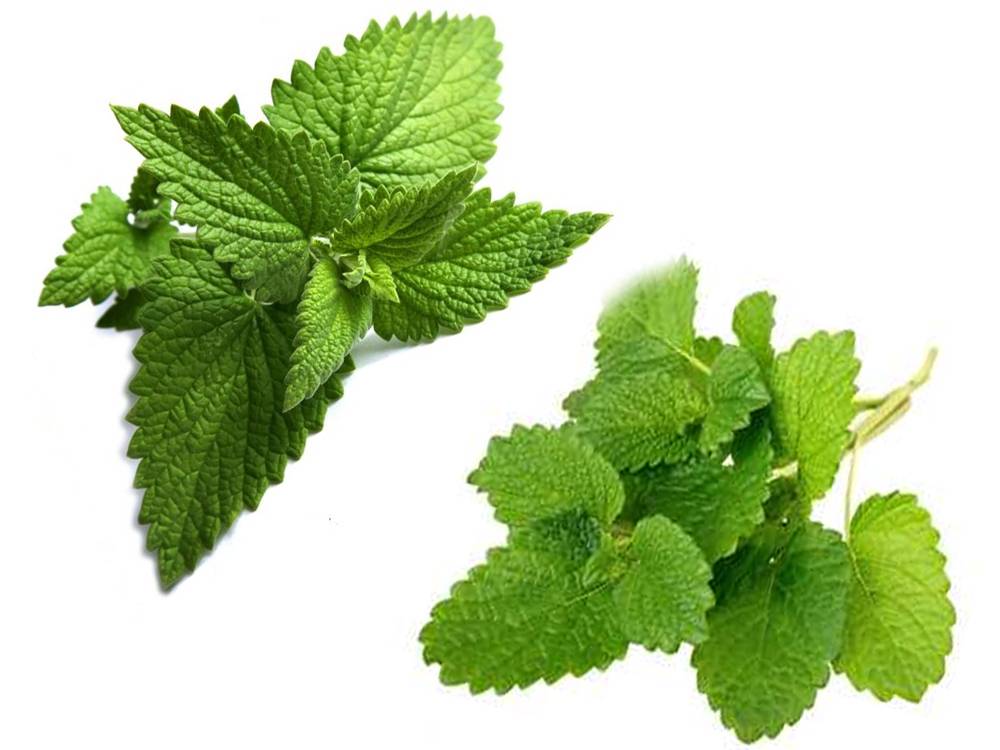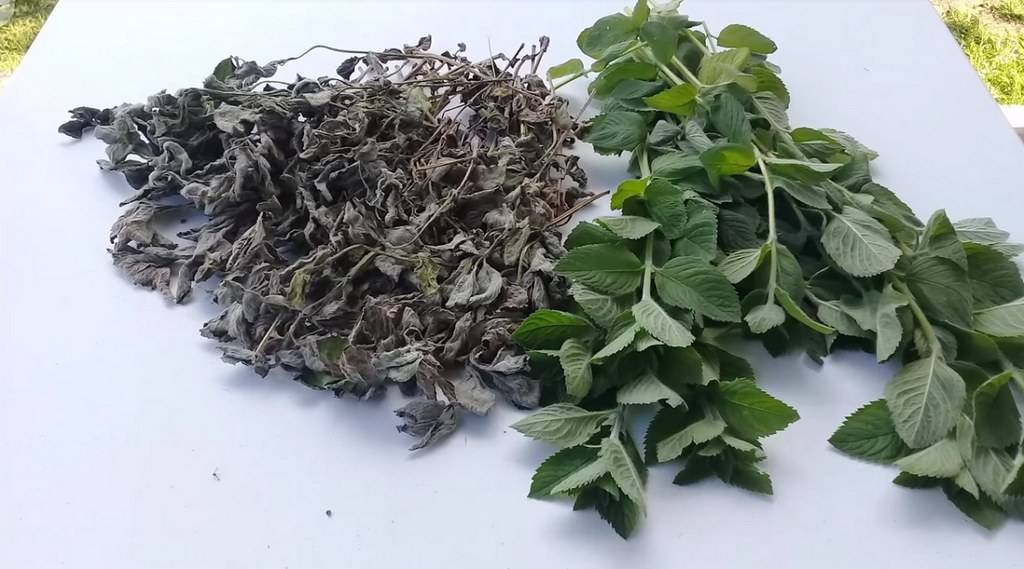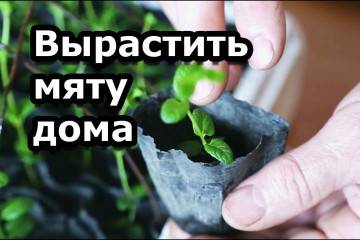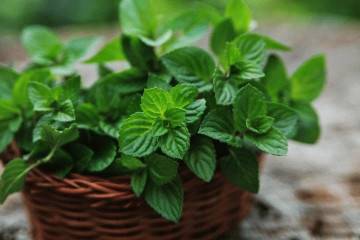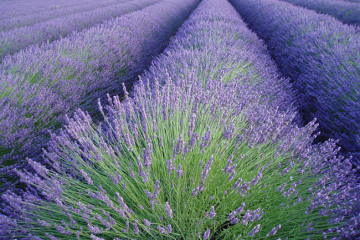When to harvest peppermint for drying?
Content:
Mint is a popular plant; it is added to drinks, used to decorate desserts and meat dishes. It is also a popular natural medicine in traditional and folk medicine. Fresh herbs can be used to make syrup, juice, jelly, aromatic sugar, liqueur, tea, sauce, freeze ice cubes, add to ready-made dishes. While there are fewer dry options, so you need to try to leave as many nutrients in the product as possible.
When to harvest peppermint for drying
Mint was grown in ancient Egypt and Rome. Legend has it that a nymph named Minta was turned into a plant. Hades loved her so much that he added aroma and freshness, as well as the name mint. That is why it is considered one of the most ancient cultivated plants. In addition to its pronounced taste, the herb has healing properties, gives the dishes brightness, special aroma and piquancy. The plant is small, about 50 cm high, in favorable conditions (moisture, coolness) can grow up to 70 cm.
Mint is decorative and wild. The cultural appearance has more useful properties, therefore it is better to plant it at home, if possible. The plant is perennial, has a powerful root system, from which young shoots appear. Frost resistant, loves moisture. The most popular of the 25 types of mint consumed in food is called peppermint, due to the burning taste of its leaves.
Collection rules
There are certain collection rules. In order not to let the beneficial substances evaporate, not to lose taste, presentable appearance, and also to extend the period of sale of this useful plant, you need to take into account the conditions when to harvest mint, pick it at the right time and further process it taking into account the recommendations.
To maximize the beneficial properties during harvesting, you need to know when to collect mint for drying - before flowering or after. The largest amount of nutrients is contained during the flowering period, so it is better to prepare it between June and August. Collecting mint during these months will allow you to preserve its properties as much as possible.
It is necessary to collect the grass in dry and sunny weather, preferably in the morning, but it is recommended to avoid the presence of drops of moisture on the leaves and stems. You can harvest mint for the winter whole with stems, but you can only make leaves. To preserve the beneficial ingredients, you need to know the secrets of when to pick mint leaves, when to cut mint.
After collecting, sort out the raw materials and shake off dust. If the plant is very dirty, sprinkle it with water, let it dry, and only then cut off the leaves or stems. Do not collect along roads, highways, industrial areas.
How to dry properly to preserve nutrients
In order for tea to turn out to be almost as rich, healthy and aromatic as from fresh plants, it is necessary to understand all stages of preparation.
Drying is an important stage after assembly, because if the technological process is violated, the grass retains its taste properties, but loses its medicinal properties.
Preparation:
- Sort out raw materials, remove spoiled shoots and leaves, garbage.
- Separate the leaves from the stem, it is better to do this with your hands, since interaction with the metal spoils the product.
- Leave the collected stems and leaves in a dark, dry, ventilated area without direct sunlight.
- Lay out the petals in a thin layer and stir daily.
The grass is left indoors at a temperature of 20-30 degrees for 2-3 weeks. You can determine readiness by taking a sheet in your hand and squeezing it. If a characteristic crunch is heard and the leaf breaks easily, then the plant is ready for storage.
How to tell if a product is ready
Qualitatively dried mint can be identified by the following features:
- natural green color on leaves and stems;
- stems and leaves break when pressed lightly;
- the dried plant has a pronounced aroma;
- preserved spicy burning taste.
It is not recommended to process raw materials in dryers, microwave ovens, ovens, using heating devices, as essential oils evaporate and the benefits are lost.
Drying with stems
If you prepare a plant for future use with stems, then you need to tie it into small bunches so that each shoot has free access to air. The bundles can be wrapped in paper, then hung on the ropes with the leaves down so that the essential oils accumulate in the leaves.
Dry in ventilated rooms without dust accumulation. In paper, shoots are protected from ultraviolet radiation, insects, dust does not get there. You can add sprigs of other plants, such as sage, thyme, St. John's wort, and others, so you get an even healthier and more varied tea.
How to store
It is necessary to store raw materials in cloth bags or glass containers, but not tightly closed. It is better to refuse paper and plastic containers, as they absorb essential oils, which contributes to the loss of beneficial properties, aroma and taste.
Raw materials absorb moisture and odors, so you need to place them separately from products with a pronounced odor. Packaged whole, with leaves and stems. If you need to use powder, it is better to prepare it just before preparing the dish.
Periodically, you need to check the containers with the product, if moisture appears, you can reuse the method that was originally dried.
Beneficial features
You can cite a huge amount of facts, than peppermint is useful. First of all, the benefits lie in the beneficial effects on the digestive and nervous systems. The herb reduces anxiety and normalizes sleep. A decoction of mint is able to normalize bowel function, regulate appetite, help to give up sweets, and increase immunity during colds.
External use is also common - thanks to the menthol contained in the composition, the herb is added to ointments and balms, which have cooling properties. It is used for burns and inflammations, and is also added to toothpastes and mouth rinses, a good antiseptic.
Mint contains a large amount of substances valuable for health:
- vitamins;
- microelements and macronutrients;
- tannins;
- acids - ascorbic, coffee, ursolic;
- flavanoids;
- betaine.
There are also about 40 other unique chemical compounds, fibers, acids and minerals. Caloric content is about 70 kcal.
Contraindications
Do not eat mint products:
- hypotension;
- suffering from varicose veins;
- allergy sufferers;
- persons with liver damage;
- children under 3 years old;
- pregnant and lactating women.
For any strange symptoms that may be associated with the use of this herb, discontinue use and consult a doctor.
Lemon mint
Peppermint is often confused with lemon balm - lemon mint. But it's important to remember that these similar plants have a number of differences.
Pepper is used as a tonic, while lemon is used to soothe. The leaves of the pepper are smooth and bright, and the color of the lemon has a calm shade of green and a light fluff. If you chew peppermint leaves thoroughly, you can feel a refreshing aftertaste, and the taste of its fellow leaves will be lemon.
How to use: unconventional ways
In addition to the traditional brewing of tea or tea, there are other unusual methods of using dried mint:
- To clean the carpet: mix dry mint and baking soda and sprinkle on the carpet, leave for an hour and then vacuum, after this procedure the carpet will be fresher.
- To scent the air in the room, it is enough to arrange the leaves in jars, you can add flower petals and arrange them around the room.
- After a hard day at work, you can prepare a natural foot scrub: mix mint with sea salt and olive oil and apply the mixture to your feet.
- Natural mint tonic: leave an infusion of a mixture of water and leaves in the refrigerator for an hour, and then wipe your face with a cool liquid, invigorates and tones.
- On the basis of a decoction of mint, you can do inhalations with nasal congestion and a runny nose.
- Protection from rodents - as they do not like harsh and pronounced odors.
- Freeze the mint broth and wipe the skin with ice cubes.
Peppermint is a very useful and widely used product. It can be used both in cooking, cosmetology and in everyday life. Possesses pleasant taste and useful properties. It is important to know when mint blooms, when to harvest, how to cut mint, where to leave this seasoning for a long time.
